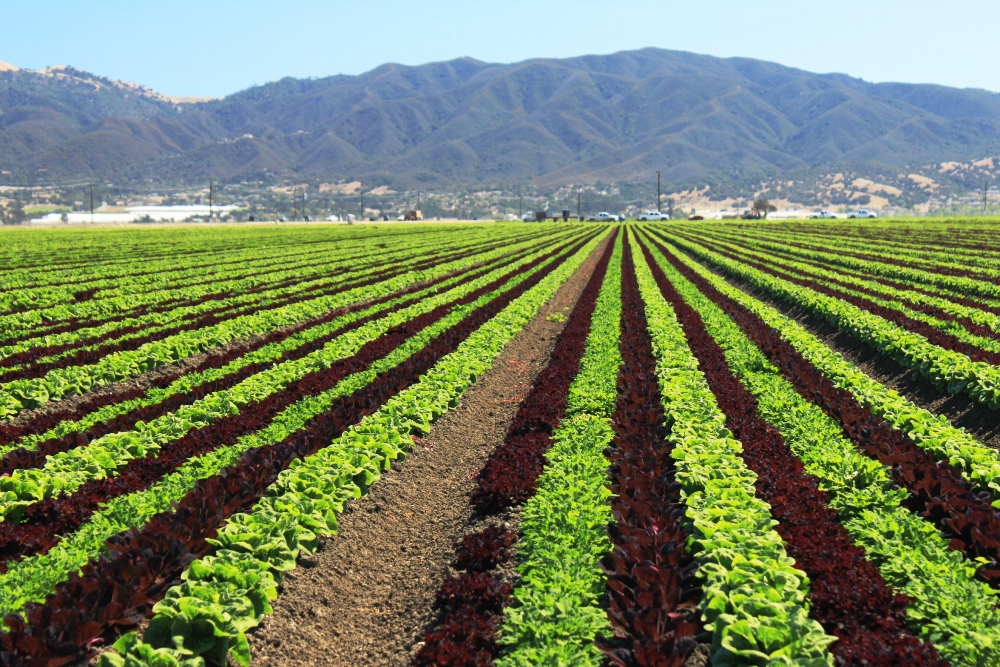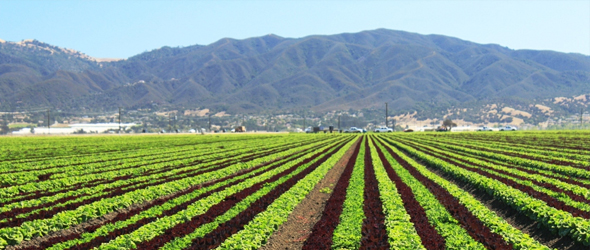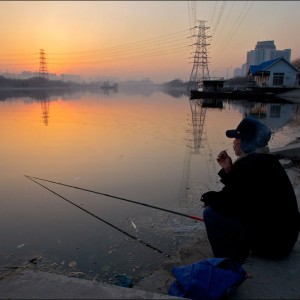U.S. Farm Irrigation Becomes More Efficient, Moves East
Federal data show that U.S. farms use less water and are investing in water-saving irrigation equipment.

By Brett Walton
Circle of Blue
U.S. farmers irrigated roughly the same amount of land as they did five years ago, but they are using less water to grow the bounty of fruits, vegetables, nuts, and grains that fill the nation’s produce aisles, livestock stomachs, and, in part, gas tanks, according to federal farm data released Thursday.
Published every five years, the U.S. Department of Agriculture’s Farm and Ranch Irrigation Survey is the most complete set of state-level data on irrigation practices, water use, and equipment. The 2013 survey reveals two long-term trends in U.S. agriculture: farms are producing more food while using less water, and farms in the typically rainy East are increasingly investing in irrigation equipment that is more commonly found in the arid West.
Both trends mark an important path forward for U.S. agriculture, according to Steve Evett, a soil scientist with the USDA Agricultural Research Service.
“It is in the best interest of the nation that irrigation is successful in areas that were formerly rainfed,” Evett told Circle of Blue. “We need more crop production per unit of water because water is the limiting factor.”
–Steve Evett, soil scientist
USDA Agricultural Research Service
The value of U.S. farm production continues to rise while water use drops. Crop sales increased by half between 2007 and 2012, according to the Census of Agriculture, a companion USDA publication that was released in May. At the same time, the average amount of water pulled from rivers, lakes, and aquifers and applied to farm fields fell by 6 percent from 2008 to 2013, to 1.6 acre-feet, according to the irrigation survey.
In broad strokes, the survey reflects an industry that is slowly adapting to an era of scarce moisture. The drop in water use can be attributed, in part, to better management practices. Farmers are keeping soils moist, which cuts the need for irrigation, while using weather and field data to water only when crops are thirsty. But wider adoption of water-saving irrigation equipment also plays a large role. Installation of sprinkler irrigation systems, which produce the green crop circles seen from the window of a transcontinental flight, grew 13 percent, and micro-irrigation systems, which apply drips of water to the soil, climbed 30 percent.
Though changes in the survey’s methods make direct statistical comparisons between 2008 and 2013 imprecise, the figures are close enough that trends can be identified, USDA spokesman Steve Sakry told Circle of Blue. U.S. farms irrigated 55.3 million acres in 2013, down slightly from the 55.5 million acres reported in 2008.
The USDA’s findings of a more-efficient, less-wasteful farm sector mirror a U.S. Geological Survey report that was released earlier in November that showed water withdrawals on U.S. farms peaking in 2005.
More Irrigation, Bigger Harvests
By several measures, most of the irrigation water comes not from rivers but from underground. Aquifers accounted for 54 percent of farm-water use in the United States. Two-thirds of irrigated acreage uses groundwater as part of its water supply, and half of irrigated acreage is nourished by groundwater alone. In many cases, more water is pumped from these aquifers than is sustainable. Scientists for years have raised alarms about the need to balance groundwater supply and demand, warnings reflected most immediately in the plummeting water tables in California.
It is easy to see why farmers love irrigation: they reap big benefits. Crop production per acre doubles for cotton, sorghum, and wheat when farmers supplement rainfall with irrigation water. According to the survey, irrigated corn produces 196 bushels per acre, compared to 129 bushels on a field that relies solely on rain. Irrigated wheat yields 78 bushels against 39 bushels for non-irrigated.
Planting New Stakes
The survey confirms a long-developing shift: irrigation is spreading eastward.
Every state east of the Mississippi River, except for North Carolina, posted gains in irrigated acreage between 2008 and 2013. Most western states registered declines, some steep. Irrigated acreage in Texas dropped by 16 percent, for instance, and in Colorado by 20 percent.
Recent droughts in the Midwest and Southeast, coupled with high commodity prices, prompted more eastern farmers to invest in irrigation, which acts as insurance against dry weather.
The eastward movement of pivoting sprinklers requires guidance, said Evett, who asserted that farmers who are not accustomed to irrigating will need more practical knowledge. All irrigation is local, he explained, and most eastern states do not have enough expertise or resources to teach farmers new skills needed for competent irrigation. Poor irrigation management leads to wasted water and nutrients flowing from farm fields to rivers, where they cause low-oxygen dead zones and algae blooms, and to aquifers, where toxic nitrate pollution can persist for decades.
“USDA research needs to respond to the fact that irrigation is moving east,” Evett said. “We need to make the case to Congress that we should add people and laboratories in those states that haven’t looked at irrigation management before.”
Brett writes about agriculture, energy, infrastructure, and the politics and economics of water in the United States. He also writes the Federal Water Tap, Circle of Blue’s weekly digest of U.S. government water news. He is the winner of two Society of Environmental Journalists reporting awards, one of the top honors in American environmental journalism: first place for explanatory reporting for a series on septic system pollution in the United States(2016) and third place for beat reporting in a small market (2014). He received the Sierra Club’s Distinguished Service Award in 2018. Brett lives in Seattle, where he hikes the mountains and bakes pies. Contact Brett Walton









Comments are closed.